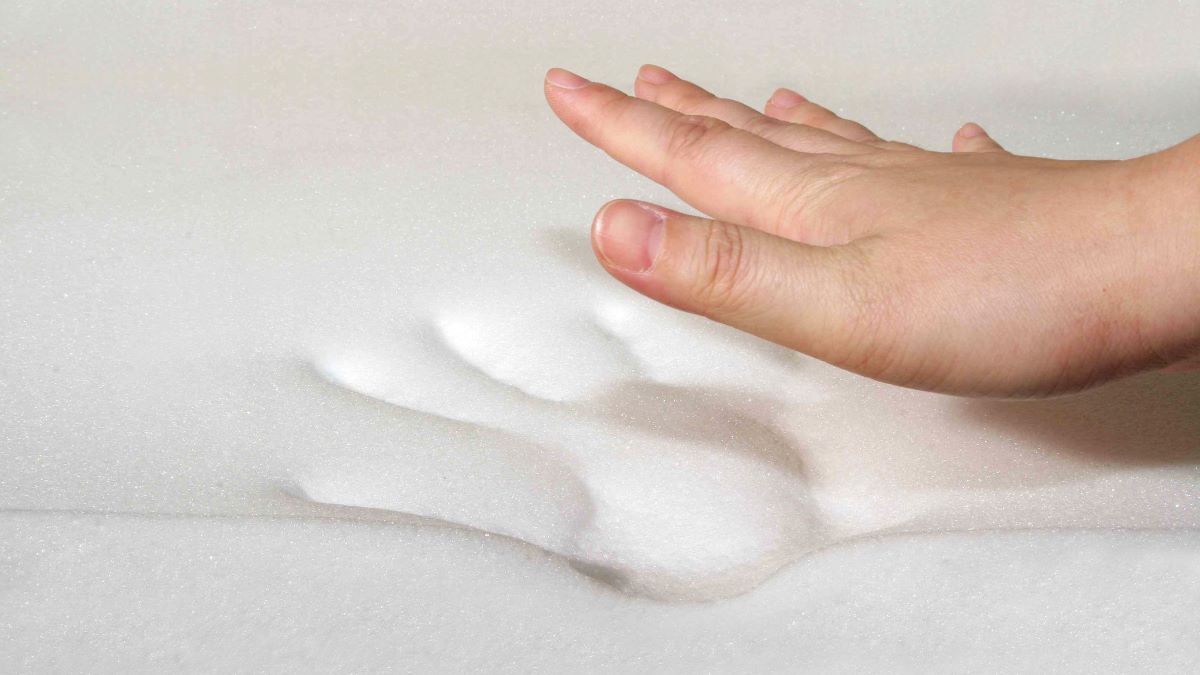Few things can refresh your body like a good night’s sleep, and few products have aligned themselves more with sound sleep than memory foam. But what happens when you upgrade your bed and need to get rid of a memory foam mattress or pillow?
Unfortunately, the recycling market for memory foam is pretty limited. You see, the most valuable (and therefore recyclable) component of sleeping materials is the metal springs, and many memory foam mattresses do not contain metal.
So what is in a memory foam mattress? Memory foam is a type of polyurethane, the same polymer of plastic used to make products like hoses. The American Chemistry Council estimates that the U.S. produces 300 million pounds of polyurethane foam per year for mattresses alone. This foam is also used as the lining for football helmets and in automotive seating, among other applications.
Foam Recycling Challenges
When it comes to plastic recycling, there’s an important saying to remember: “Once it goes foam, it can’t go home.” The recycling process involves breaking products down to raw material to maximize their reuse, but you can’t un-foam plastic. So, you can’t turn a polyurethane foam product into a polyurethane hose. (The same is true of expanded polystyrene, which you may know by the brand name Styrofoam.)
So, memory foam can’t be broken down to the original plastic polymer. However, it can be shredded and reused to make another foam product, such as new memory foam or car seat padding. The challenge is the amount of work involved in reclaiming memory foam. The process typically involves tearing open the mattress (or another item) and removing foam by hand. This increases the time and cost but maximizes the amount of material reclaimed. Unfortunately, because virgin polyurethane can be produced rather cheaply, there is little market for reclaimed memory foam.
For mattress recycling, legislation is often the best answer. The Mattress Recycling Council has worked in four states (California, Connecticut, Rhode Island, and Oregon) that passed mattress recycling legislation to create collection programs. But that leaves 47 states fending for themselves, and many mattress recyclers will only collect in bulk from businesses.
If you’re buying a new mattress, be sure to ask the store if they will pick up the old mattress for recycling when they deliver the new one.
Recycling Alternatives
If they’re still in usable shape, your best bet for getting rid of memory foam products is to donate them for reuse. Contact your local second-hand store to see if they accept these items. Or, post on Craigslist or Nextdoor to see if someone will pick them up. These products typically last over 10 years, so if your item is new enough, you might even be able to sell it.
It goes without saying, but don’t donate a mattress or pillow contaminated with bed bugs or bloodstains. No one can reuse these materials, so you’re just passing the problem to someone else.
There are also plenty of do-it-yourself projects for your old memory foam products. This is an excellent option if you have a small amount of memory foam, like a pillow or a mattress cover.
If you can’t donate or reuse these products, contact a junk hauler like 1-800-Got-Junk or College Hunks Hauling Junk to arrange pickup. These companies will attempt to recycle as much material as possible, and you’ll likely have other products in the house that they can haul at the same time.
Editor’s Note: Originally published on January 30, 2019, this article was updated in January 2025. Got a question about how to recycle as specific product or type of material? Let us know, and we’ll do the research, sharing the results with the world. You can help support our work, too!
Source link
Trey Granger earth911.com

